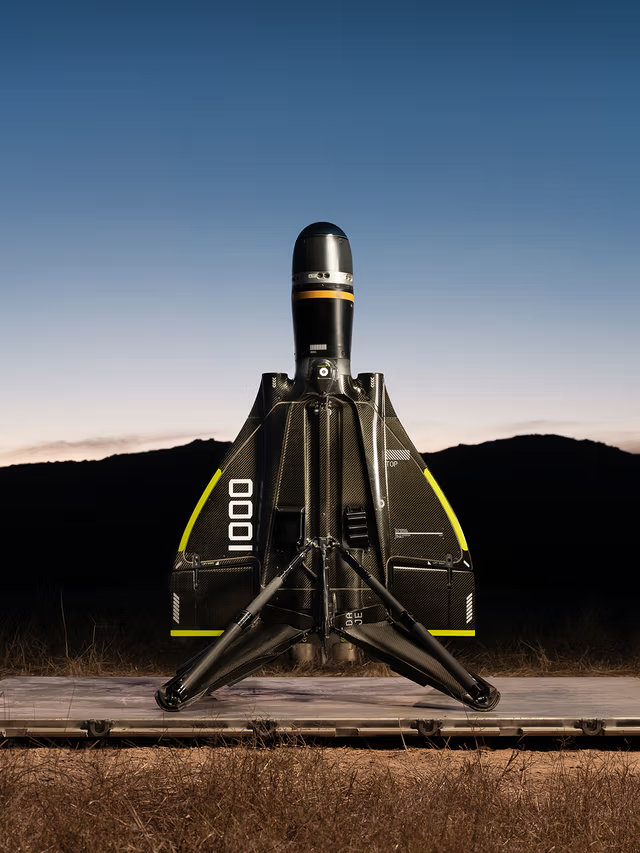PICKAWAY COUNTY, Ohio — In what state leaders are hailing as a historic economic win for Ohio, California-based defense technology company Anduril Industries announced its plan to construct a $1 billion facility named Arsenal-1 in Pickaway County. The five-million-square-foot manufacturing site will be located on 500 acres near Rickenbacker International Airport and is expected to create over 4,000 direct jobs by 2035, in addition to thousands of indirect and induced positions. State officials, including Governor Mike DeWine and Lt. Governor Jon Husted, have lauded the project as a game-changer for Ohio’s economy, with DeWine’s office calling it the largest single job creation and payroll project in the state’s history.
The facility is projected to contribute nearly $1 billion annually to Ohio’s GDP, generating $2 billion in economic output and $1 billion in labor income every year. Construction is expected to begin in the coming months, solidifying Ohio’s role as a hub for advanced manufacturing and defense technology.

A Troubled History with Public Incentives
While the announcement has been celebrated by state leaders, it has also drawn sharp criticism from watchdog groups and skeptics who question the significant public subsidies tied to the project. Anduril is set to request a Job Creation Tax Credit from the Ohio Department of Development, along with $70 million from the All Ohio Future Fund, which requires approval by the Ohio Controlling Board. Critics argue that such substantial incentives place undue burden on taxpayers and could overshadow the project’s long-term benefits.
Concerns about Anduril’s rapid rise in the defense sector have also amplified public skepticism. Founded in 2017, the company has drawn scrutiny for its close ties to controversial figures, such as Peter Thiel’s Founders Fund, which co-led its latest $1.5 billion Series F funding round.
A High-Stakes Gamble in National Defense
Anduril Industries has positioned itself as a disruptor in the defense technology space, leveraging artificial intelligence and autonomous systems to develop cutting-edge military solutions. Its flagship Lattice AI-powered platform has been adopted by U.S. and allied military forces for advanced threat detection and response. Arsenal-1 will serve as the company’s manufacturing hub, capable of producing tens of thousands of autonomous military systems annually.


The company’s strategic partnership with OpenAI, announced in late 2024, further solidified its push toward AI-powered defense systems. Together, the two companies aim to integrate AI into counter-unmanned aircraft systems (CUAS) to combat emerging aerial threats. While some view this as an innovative leap in national defense, others warn of the ethical and operational risks of deploying AI in military applications.
Legal Troubles and Transparency Concerns
Anduril’s history has not been without controversy. The company has faced lawsuits, including a breach-of-contract case filed by a former shareholder of Area-I LLC, a drone developer acquired by Anduril in 2021. Allegations of revenue diversion, impaired operations, and failure to pay over $15 million in earnout payments are currently under litigation.


Additionally, Anduril’s relationship with the U.S. Department of Defense has been scrutinized in the past. A 2021 Government Accountability Office (GAO) decision denied the company’s protest over an Air Force solicitation for tactical edge node technology, ruling that the government acted within its authority.
Community Impact and Public Opinion
For Pickaway County, the potential economic boost is undeniable. Local officials anticipate a surge in population, increased demand for housing, and higher spending in the region. However, community advocates warn that such rapid development could lead to gentrification and strain local infrastructure.
Anduril’s rise also raises ethical questions about the role of private companies in military innovation. Opponents argue that tying Ohio’s economic future to a defense contractor could increase the state’s dependence on the volatile defense sector, making it vulnerable to shifting political and military priorities.
Looking Ahead
As construction on Arsenal-1 begins, public debate over the project’s merits is likely to intensify. Supporters highlight the transformative potential of Anduril’s investment, while skeptics remain wary of the costs—both economic and ethical—associated with the defense giant’s expansion.
One thing remains certain: the $1 billion Arsenal-1 facility will not only reshape Ohio’s economic landscape but also thrust the state into the spotlight of national security innovation and the challenges that come with it.






